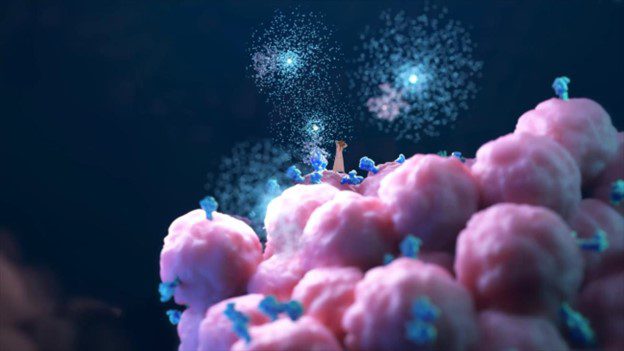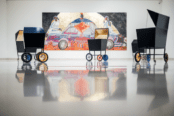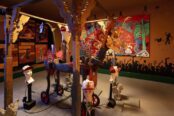Amongst the many issues facing humanity the issue of an ageing population and the social and financial impacts of that are often muted in the general discourse of the global trajectory. In the UK, there will be a phased increase in qualifying age for the state pension from 66 to 68 for those born after 1960. However, life expectancy fell in 2022 (78.71 years to 78.57 years, and from 82.68 years to 82.57 years for women, statista.com thought it isn’t clear whether this is related to covid-19) and with falls in funding and services for healthcare, plus general austerity, one imagines that further falls are to be expected. In general, we might easily expect that getting older is going to be getting worse in both macro and micro terms.
However, where there is a demand there is opportunity and at the other end of the spectrum we have advances in longevity which means that for that some an active life beyond a century might soon become a possibility. The implications of a long living population on housing, jobs, social care and support are clear challenges for the world but on an individual basis the idea has a long pull. It’s a large territory to cover and Schindhelm’s bold exhibition investigates the fountain of youth promise of an age-less utopia and what an resulting world might look at.

Exhibition Notes
The Kulturstiftung Basel H. Geiger | KBH.G is delighted to announce a collaboration with the multidisciplinary German-born Swiss author, filmmaker, and curator Michael Schindhelm. The ambitious project will completely transform the premises of KBH.G. Comprising two distinct exhibitions, both designed as immersive spaces, they will take place from May to November 2024, presenting collaborations with artists, scientists, actors, and designers.
The inaugural exhibition, titled ‘The End of Aging,’ opening from May 3 to July 21, 2024, will delve into the fascinating world of escaping biological mortality, speculating on the possibilities and consequences of reversing the aging process. The second exhibition ‘Roots,’ taking place from August 30 to November 17, 2024, will explore the post-colonial history of Bali through the life and influence of German artist Walter Spies. It will encompass critical perspectives on mass tourism, historical events, and cultural identity. Both projects will offer an alternative viewpoint on recent developments in global human society and invite visitors to engage with some of the most relevant questions of our society today.
The End of Aging
In a world undergoing a biotechnological revolution, the project aims to address the urgent issue of aging, described by some as the greatest societal challenge of our time. The exhibition raises questions about the social, economic, and cultural implications of longevity. Reality and fiction blur through short films developed for the exhibition, dystopian environments reminiscent of science fiction scenography, and complex soundscapes. Alongside these installations, insights from internationally renowned scientists provide visitors with the opportunity to glimpse into the possible future of biotechnologically supported life extension.
In collaboration with Giulio Margheri, architect and urban researcher at OMA, Luca Moscelli, founder of Buromosa, a Rotterdam-based architecture practice, and Till Zehnder, sound designer, Schindhelm will transform KBH.G with a site-specific, immersive installation. This installation will intricately replicate the interior of an abandoned hospital set in the future. Arranged into two parts, visitors will initially experience video and audio works depicting a fictional civilization where people lead significantly longer lives and can reverse the aging process. As visitors navigate through numerous hospital areas, including a Control Room, Surgery Room, Laboratory, and Recovery Room, they will encounter audiovisual scenes and environments depicting various challenging possibilities in the near future.
Five actors and musicians have participated in the project alongside Michael Schindhelm: Tabitha Frehner (actress), Graham Valentine (actor, voice actor), Jürg Kienberger (musician, actor), Hana Motokura (child actress), and Urs Baur aka Black Tiger (rapper). Within the exhibition, these figures will explore key themes related to anti-aging, covering biomarkers to reverse the biological clock, the impact of a healthy lifestyle on longevity, rejuvenation strategies, the inevitability of death, career extensions, and the scientific hallmarks of aging. These themes will be organised into four categories: science, business, ethics, and the elderly.
The first section includes a series of short films featuring individual characters, each providing unique perspectives that span from negative to positive scenarios. While the characters won’t directly interact, their talks will be woven together to form an overarching narrative on the theme of longevity. The films will also incorporate engaging animations showcasing medical imaging, and a Lab Room will invite visitors to embark on an exploration of the world of nanotechnology.
The second part of the exhibition will present a comprehensive overview of the current state of scientific research and development in the field of longevity. Within the gallery spaces, visitors will be presented with short interviews with experts from a number of international public and private institutions, as well as renowned specialists in social, economic, and religious aspects of the subject, including Nobel Prize winner Venki Ramakrishnan, Novartis’ President of Biomedical Research Fiona Marshall, and Michael N. Hall, who discovered mTOR, a crucial cellular signalling protein that regulates various biological processes. They will share their perspectives on the future of longevity.
Michael Schindhelm says: “Longevity is a desire as old as humankind. In the near future, we may have numerous ways to slow or even reverse aging, with some in proof-of-concept experiments and others already in human trials. The first anti-aging drugs could arrive within the decade, followed by a procession of therapies. Yet, the exhibition grapples with the social, economic, and cultural implications of longevity. Do we truly wish to live forever? How would society cope with people aged 150 or over? Is there a need to enact the right to die? These questions and more will be explored in this exhibition. Definite answers may be elusive, but with the aid of speculative fiction and insights from internationally acclaimed scientists, we may catch a glimpse of the possible future of longevity.”
Raphael Suter, Director of KBH.G, explains: “For the first time KBG.H has invited a curator to work across a project involving two exhibitions. Michael Schindhelm’s background in shaping cultural narratives brings a unique perspective to the exploration of longevity, seamlessly blending science and art to provoke contemplation on the implications of escaping biological mortality.”
“The End of Aging” is a collaborative effort with a number of partners and contributors, including international research institutions such as Novartis, University of Basel, Biozentrum Basel, Institute for Ophthalmology, FHNW HEK, and the media studio iArt. The exhibition will be open to the public from May 3 to July 21, 2024, at the Kulturstiftung Basel H. Geiger | KBH.G, as well as on a dedicated digital platform from July 2024.
Bid(s) For Survival – Michael Schindhelm The End of Aging from May 3 to July 21, 2024 Roots from August 30 to November 17, 2024 Daily (except Tuesday) from 11 am to 6 pm Catalogue and admission are free

The aim of art is to represent not the outward appearance of things, but their inward significance. – Aristotle



















